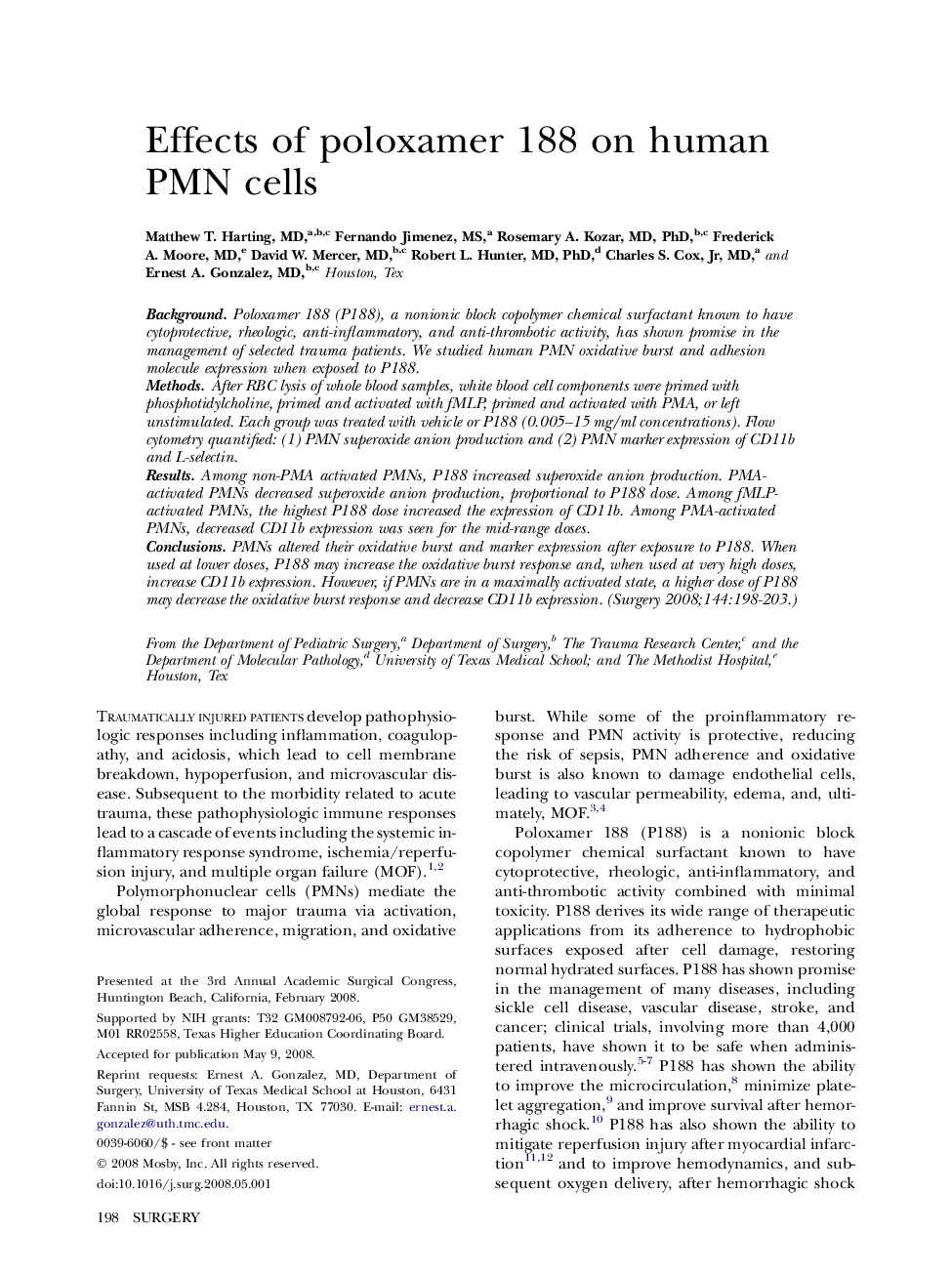| کد مقاله | کد نشریه | سال انتشار | مقاله انگلیسی | نسخه تمام متن |
|---|---|---|---|---|
| 4309454 | 1289312 | 2008 | 6 صفحه PDF | دانلود رایگان |

BackgroundPoloxamer 188 (P188), a nonionic block copolymer chemical surfactant known to have cytoprotective, rheologic, anti-inflammatory, and anti-thrombotic activity, has shown promise in the management of selected trauma patients. We studied human PMN oxidative burst and adhesion molecule expression when exposed to P188.MethodsAfter RBC lysis of whole blood samples, white blood cell components were primed with phosphotidylcholine, primed and activated with fMLP, primed and activated with PMA, or left unstimulated. Each group was treated with vehicle or P188 (0.005–15 mg/ml concentrations). Flow cytometry quantified: (1) PMN superoxide anion production and (2) PMN marker expression of CD11b and L-selectin.ResultsAmong non-PMA activated PMNs, P188 increased superoxide anion production. PMA-activated PMNs decreased superoxide anion production, proportional to P188 dose. Among fMLP-activated PMNs, the highest P188 dose increased the expression of CD11b. Among PMA-activated PMNs, decreased CD11b expression was seen for the mid-range doses.ConclusionsPMNs altered their oxidative burst and marker expression after exposure to P188. When used at lower doses, P188 may increase the oxidative burst response and, when used at very high doses, increase CD11b expression. However, if PMNs are in a maximally activated state, a higher dose of P188 may decrease the oxidative burst response and decrease CD11b expression.
Journal: Surgery - Volume 144, Issue 2, August 2008, Pages 198–203